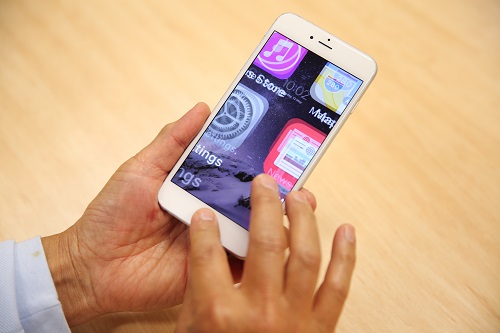Smartphone designers and app developers must have a stronger focus on ensuring their products are accessible to people who are blind or have low vision, new research from Vision Australia and Curtin University has shown.
Seventy-nine per cent of people who are blind or have low vision own smartphones in Australia, however many are being prevented from harnessing the full utility of their device.
One in two blind or low vision smartphone users said they use apps designed to provide support with everyday tasks, such as navigation, reading and human assistance. Commonly referred to as “accessibility” apps, the research shows many of these apps don’t meet the needs of those they are designed to help.
Thirty-five per cent of “accessibility app” users said the apps weren’t fully accessible, while 38% said they were difficult to use and understand. 44% said they experience glitches or technical issues when trying to use accessibility apps.
Bruce Maguire, Vision Australia’s lead policy advisor, said smartphone and app accessibility is vital to modern life for people who are blind or have low vision.
“Smartphones are only going to become a bigger part of our lives and it’s important people who are blind or have low vision are not left behind. When the technology is designed right, it can make a huge difference for our community,” he said.
“For example, the Christmas pudding I’m making this year calls for a lot of currants but only a few raisins. They are in the same kind of box, but an app on my phone helps me figure out which one is which by reading the text on the box. I also have a talking app on my phone that helps me tune my cello without the need to look at a dial or visual pointer.”

Caption: Smartphones and app must be designed to meet the needs of people who are blind or have low vision
Along with apps designed to specifically support people who are blind or have low vision, Bruce said the built in accessibility features of smartphones and mainstream apps also need to be accessible.
Nearly two thirds (65%) of blind and low vision people said they used the built in screen-reader voiceover feature of their smartphone. However, other built-in accessibility features such as text resize (43%), zoom and magnification (41%), contrast, colour and brightness adjustments (32%) are less popular, suggesting they are not meeting the needs of people who are blind or have low vision.
“It’s not enough for smartphone designers to simply add a feature and boast that this increases accessibility. These features need to actually be of benefit and be easy for people who are blind or have low vision to use,” Bruce said.
“People who are blind or have low vision use their smartphones for the same reasons as the rest of the community, such as handling phone calls and texts, banking, browsing the web, doing grocery shopping, paying for goods and services and ordering home-delivered food.
“The research shows that it’s important for smartphone designers to consult with the disability sector before they introduce new features. At the same time, all app developers need to ensure that their apps integrate with the built-in accessibility features found in smartphones.”
Bruce points to the release of the Australian Governments COVIDSafe app as a prime example of how flawed design in the app and smartphone industry can have serious impacts for people who are blind or have low vision.
“The COVIDSafe app was heavily promoted as being something to help protect all Australians during the middle of a pandemic, however at the time of its release it did not comply with accessibility guidelines.
“Our research tells us that people who downloaded the app but were not able to install it due to accessibility flaws often simply deleted it. Failing to build apps that are accessible from the outset makes people feel excluded and frustrated, and can lead to a loss of confidence and trust in the developers and in this case, the Government”.
“This latest research shows very clearly that it’s no longer good enough for accessibility to be an afterthought, it must be considered from the outset and be front-of-mind in every stage of the development of devices and apps.”
The full Curtin University and Vision Australia research is available to download.
Ends.
For further media enquiries: Phil McCarroll, 0416 632 253
About Vision Australia
Vision Australia is a leading provider of blindness related services. We offer a wide range of services, equipment and training so people who are blind or have low vision can live the life they choose.
Whether it’s at home, work, school or in the community, our expert staff provide clients across all age groups with skills and tools to help lead active, safe and independent lives.
Visit our website at www.visionaustralia.org.










